Name Ramses Wassef Role Architect | Died 1974 | |
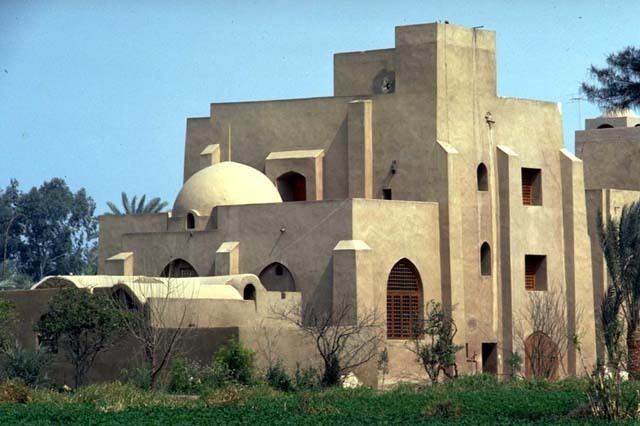 | ||
Books Egyptian Landscapes: 50 Years of Tapestry Weaving at the Ramses Wissa Wassef Art Centre, Cairo | ||
2005 egypt cairo ramses wissa wassef art center
Ramses Wissa Wassef (1911–1974) was an Egyptian architect and professor of art and architecture at the College of Fine Arts in Cairo and founder of the Ramses Wissa Wassef Art Centre.
Contents
- 2005 egypt cairo ramses wissa wassef art center
- Ramses wissa wassef museum
- Biography
- Architectural and design career
- Designs
- Ramses Wissa Wassef Art Centre
- Exhibitions
- Publications
- Awards
- References
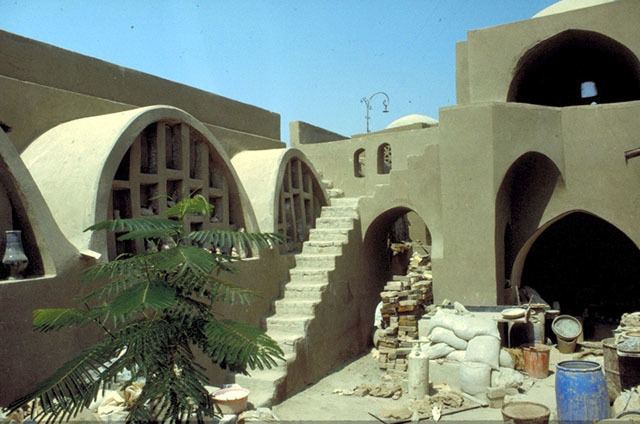
Ramses wissa wassef museum
Biography
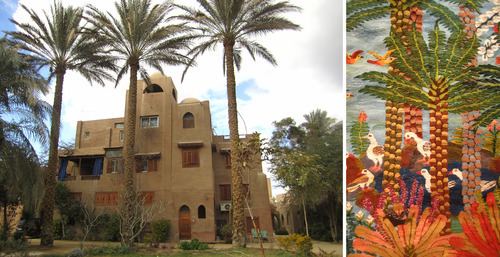
Ramses Wissa Wassef was born in Cairo. His father was a lawyer, a leader of Egypt's nationalist movement and an art patron who promoted the development of the arts in Egypt. After high school, Wassef wanted to become a sculptor but changed his mind and studied architecture in France at the Ecole des Beaux-Arts de Paris. His thesis project "A Potter's House in Old Cairo" received the first prize in 1935. He had a passion for beauty in form and believed "one cannot separate beauty from utility, the form from the material, the work from its function, man from his creative art "

After Wassef's death, his family donated his original architecture drawings to the Rare Books and Special Collections Library at the American University in Cairo.
Architectural and design career

At the beginning of his career in 1935, Wassef was struck by the beauty of the medieval towns and the old quarters of Cairo. He felt that ancient craftsmen had managed to derive from their traditional heritage an infinite variety of expression and created effects distinguished by local character. He developed an architectural style that bore the stamp of his own strong personality and responded to the challenge of the times without breaking away from the past. Impressed as he was by the beauty of the Nubian houses in the villages around Aswan, which still preserved the domes and vaults, inherited form the earliest Pharaonic dynasties, he resolved to maintain their presence in his own architectural work for reasons of aesthetics, climate and economics. He made use of traditional craftsmen such as stonecutters, traditional carpenters, glass blowers and potters who had inherited the techniques and traditions of the Egyptian vernacular heritage. Wassef taught architecture and art at the Department of Architecture, College of Fine Arts, Cairo, which he also chaired.
Designs
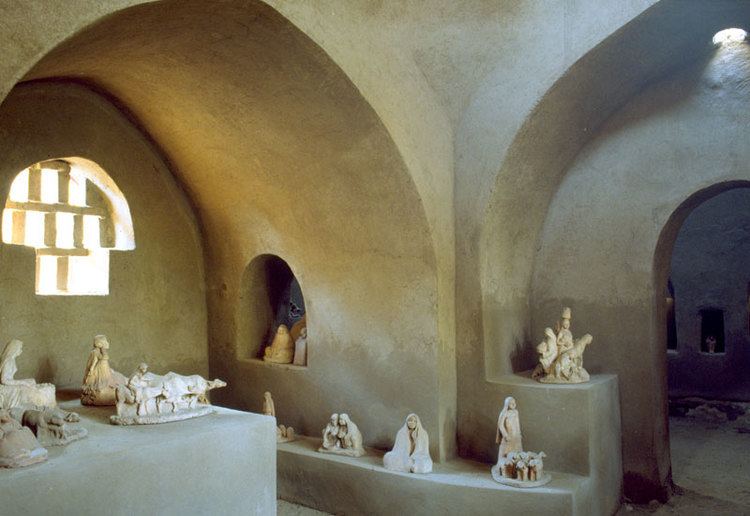
Ramses Wissa Wassef Art Centre
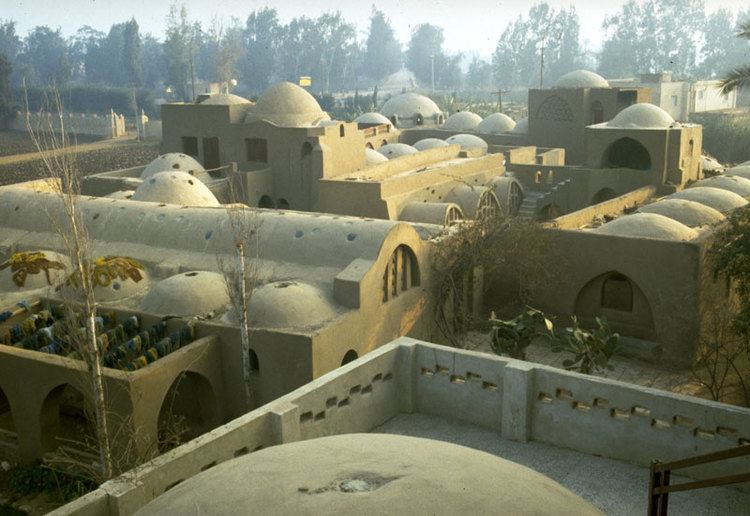
Wissa Wassef founded the Ramses Wissa Wassef Art Centre in 1951, located in the Harrania district of Giza, near the Giza pyramids in the Greater Cairo region. He established it to teach young Egyptian villagers how to create art, including tapestries. He believed that children are endowed with creative power and potential. Wissa Wassef wanted to prove that artistic creativity is innate in everyone, and regardless of deadening influences from mass-produced objects, it can flourish within supportive settings such as the Art Centre.
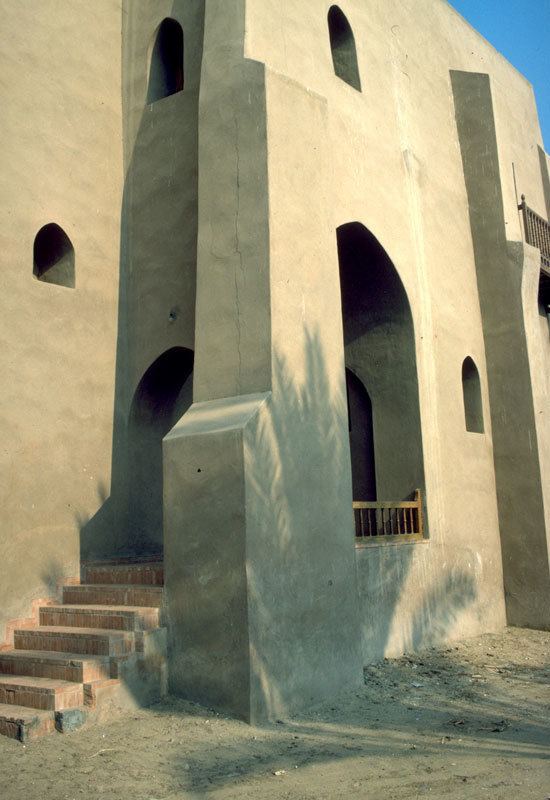
The Ramses Wissa Wassef Art Centre won the Aga Khan Award for Architecture from the Aga Khan Development Network in 1983. The Art Centre is open to the public, with an art museum exhibiting its early tapestry works, and a museum shop selling contemporary tapestry works by Art Centre artists. Tours are available, upon contacting the Art Centre in advance to schedule.
The Ramses Wissa Wassef Art Centre has operated continuously since opening in 1951, with its artists creating tapestries there for over 60 years. The Centre's artists create the designs and weave the tapestries directly from their imaginations onto the looms. Pre-designed patterns have never been used, proving Wissa Wassef's belief that artistic creativity is intrinsic, and can be expressed when a supportive context is available.
The renowned textile artists Ali Selim and Karima Ali, who began as children at the Centre in the 1960s and 1970s, continue to weave tapestry masterworks, now up to 10 feet (3.0 m) in width.
Exhibitions
The tapestries have been internationally recognized since the late 1950s. Many exhibitions have been held in Europe and the Smithsonian Institution organized a traveling exhibit in the USA in 1975-76. The most recent exhibition was at the Coningsby Gallery in London, UK, during November 2012. A simple paperback catalog was published for the 2006 for an exhibition at the School of Oriental and African Studies in the University of London to mark the center's 50th anniversary. "Egyptian Landscapes" is a book of photographs that highlights the work of the center.
1954 - Organized by the group Amities Francaises,Cairo, Alexandria and Ismallia, Egypt
1954 - Egyptian Art Exhibition,Italy
1956 - The Near East College Association, New York, USA
1958 - Gewerbemuseum, Zurich & Basel, Switzerland
1959 - Bilddteppiche, Krefeild, Germany
1960 - Museum of Modern Art, Stockholm, Sweden
1961 - Kunstindustrimusset, Germany
1961 - National Museum of Modern Art, Stockholm, Gothenburg, Malmo, Sweden
1962 - Fodor Museum, Amsterdam, The Netherlands
1963 - Museum Am ost Wall Dortmund, Munich, Germany
1964 - Stedelijk Museum, Groninger Museum Voor Stad en Lande, The Netherlands
1964 - Neue Sammlung Munchen, Munich, Germany
1965 - Musee D’ Arts Decoratifs, Rosenthal Studio-Haus-Delvaux, Paris, France
1966 - Museum of Modern Art, Skovde Konsthall Skovde, Stockholm, Lunds, Sweden
1966 - Congress Mondial, Prague, Czechoslovakia
1967 - Musee D’Arts Decoratifs, Lausanne, Switzerland
1967 - Museum of Modern Art, Stockholm, Sweden
1969 - Royal College of Art, London, England
1971 - Gallery Brand Strupp, Oslo, Norway
1972 - Ideal Home Exhibition, London, England
1973 - Gallery La Demeure, Paris, France
1974 - Al Palazzo Dellarejario, Milan, Italy
1975 - New York Natural History Museum, New York City, USA
1975 - Textile Museum, Washington, DC, USA
1975 - Gallery La Demeure, Paris, France
1977 - Italian Culture Centre, Cairo, Egypt
1978 - Touring exhibition, Berlin, Essen, Stuttgart, Germany
1978 - Gallery La Demeure, Paris, France
1979 - Roemer - und Pelizaeus - Museum, Hildesheim, Germany
1979 - Anneberg Gallery, San Francisco, USA
1979 - Modern Art Museum, Stockholm, Sweden
1981 - University of Southern California, Los Angeles, USA
1981 - Egyptian Art Academy, Rome, Italy
1985 - The Barbican Centre, London, UK
1985 - Polytechnic Gallery, Newcastle, UK
1986 - ArtSpace, Aberdeen, UK
1986 - City of Edinburgh Art Centre, Edinburgh, UK
1986 - Glynn Vivian Art Gallery, Swansea, Wales, UK
1990 - First Tapestry Triennale, Tournai, Belgium
1991 - Musee Jean Lurcat, Angers, France
1993 - Institut Du Monde Arabe, Paris, France
1995 - Culture Centre, Ha, Norway
1995 - Lebanese/ Egyptian Businessmen’s Association, Beirut, Lebanon
1999 - Egyptian Culture week, Tones, Tunisia
2000 - United Nations, Geneva, Switzerland
2001 - Conservatoire et Jardin Botanique, Geneva, Switzerland
2003 - Green Art Gallery, Dubai, UAE
2004 - Frankfurt Book Fair, Frankfurt, Germany
2006 - Brunei Gallery, SOAS, University of London, London, UK
2009 - Nature in Art Trust, Gloucestershire, UK
2012 - Children's Museum, Take Me There: Egypt!, Indianapolis, USA
2012 - The Coningsby Gallery, London, UK
Publications
In 1961, renowned photographer Werner Forman discovered the Art Centre by accident while shooting in Egypt. Forman and later his archive staff have been a primary international ambassador for the tapestries. He published two books available online for used book sellers.
"Tapestries from Egypt" by Ramses Wissa Wassef and Werner Forman, 1961, Hamlin Publishing Group
"Woven by Hand" by Ramses Wissa Wassef and Werner Forman, 1972, Hamlin Publishing Group
Other Publications
"Egyptian Tapestries from the Workshop of Ramses Wissa Wassef: An Experiment in Creativity" by Ceres Wissa Wassef, 1975, Smithsonian Institution Traveling Exhibition Service
"Das Land am Nil" by Arne Eggebrecht, Eva Eggebrecht, Wilfried Seipel, 1979, Roemer- und Pelizaeus-Museum, Hildesheim
"Egyptian Landscapes, 1985" by Yoanna Wissa Wassef and Hilary Weir, 1985, Ramses Wissa Wassef (UK) Exhibition Foundation
"Egyptian Landscapes, 2006" by Suzanne Wissa Wassef, Yoanna Wissa Wassef and Hillary Weir, 2006, Ramses Wissa Wassef (UK) Exhibition Trust
